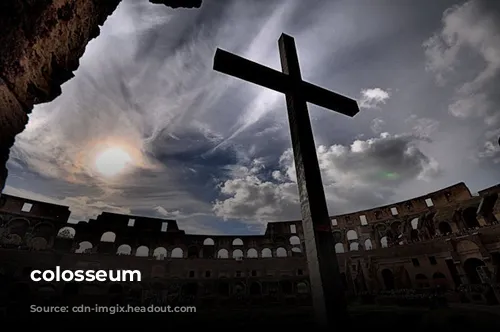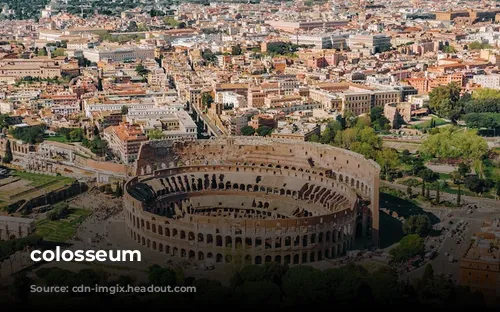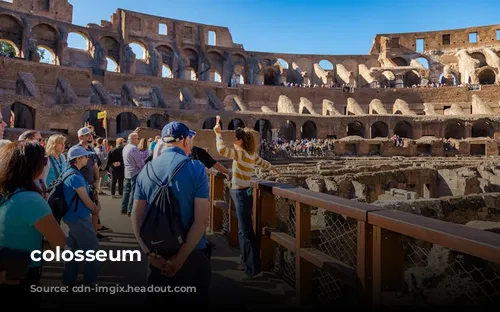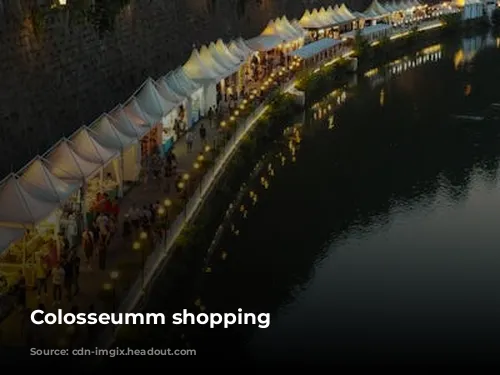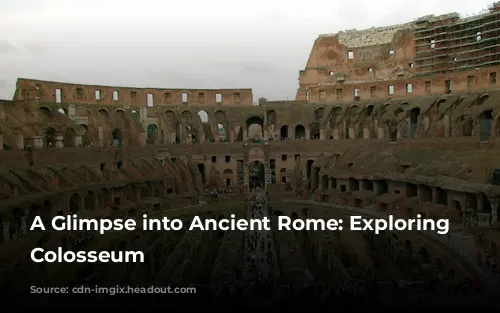The Colosseum, a monumental symbol of the Roman Empire, stands as a testament to the engineering prowess of the ancient world. This imposing elliptical structure, measuring 620 feet long and 513 feet wide, was built on the site of a former artificial lake. Its construction marked the end of a period of tyrannical rule and served as a gesture of goodwill from Emperor Vespasian to the Roman people.
The Colosseum’s sheer scale is awe-inspiring. It could accommodate 60,000 seated spectators and 10,000 standing guests, often hosting crowds of up to 70,000 people. This massive amphitheater served as the stage for a spectacle of entertainment that captivated the Roman populace, including gladiatorial combats, wild animal hunts, and even theatrical performances.
Engineering Marvel: A Testament to Roman Skill
The Colosseum stands as a marvel of engineering and architecture. Unlike most amphitheaters of its time, which were circular, the Colosseum’s elliptical shape provided spectators with an unobstructed view of the action taking place in the arena. Constructed without the aid of modern machinery, the amphitheater boasts 80 ornate entrances, numerous doorways, tunnels, staircases, and corridors.
The Colosseum’s construction began around 70-72 AD and continued for over a century. Its grand inauguration in 80 AD, under the reign of Vespasian’s son Titus, featured 100 days of entertainment. While the Colosseum served various purposes throughout its history, including as a church, fortress, and quarry, it gradually fell into disrepair due to earthquakes, vandalism, and neglect. Despite this, thanks to extensive restoration efforts that began in the 1990s, the Colosseum has been restored to its former glory and stands today as a beacon of ancient Roman history.

Unveiling the Colosseum’s Secrets: A Journey Through Time
The Colosseum’s grandeur is evident in its imposing dimensions. Measuring 189 meters long, 156 meters wide, and 50 meters high, it holds the Guinness World Record for the largest amphitheater in the world. This massive structure, built primarily from travertine stone and concrete, features a four-story facade adorned with columns and arches, showcasing different architectural styles.
The Colosseum’s arena floor, constructed using red and black stone blocks, was covered with sand to prevent slipping and facilitate cleanup after the performances. The arena was equipped with lifts, special machinery, and trap doors for dramatic entrances and special effects. A unique structure called the Hegmata was used to lift heavy animals from the hypogeum, an underground network of tunnels and chambers, onto the arena floor.

A Glimpse into the Past: Exploring the Colosseum’s Hidden Depths
The recently opened underground and Belvedere (top level) areas offer visitors a unique glimpse into the past. The Colosseum’s hypogeum, a two-level underground network, housed animals and gladiators before their entry into the arena.
The Colosseum’s design was meticulously planned to accommodate the flow of crowds. The amphitheater featured 80 entrances, ensuring smooth entry and exit for spectators. Additionally, a velarium, a retractable awning, was used to protect spectators from the sun and rain.
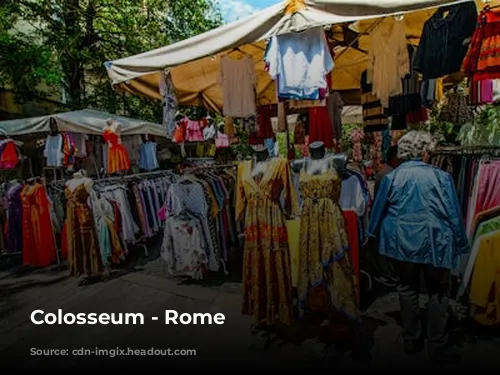
Planning Your Visit: Tickets, Access, and More
Planning a visit to the Colosseum is an exciting adventure, and knowing a few things can help you make the most of your experience.
Tickets booked through Headout include skip-the-line access to the Colosseum. Depending on the ticket you choose, you may also have access to a guided tour. It’s important to note that a standard ticket does not include access to the Underground, the Belvedere, and the Arena. To explore these areas, you’ll need to purchase a special access ticket.
Guided tours are limited to 20 individuals per group, ensuring a more personalized experience. Depending on the type of ticket, a visit to the Colosseum can take anywhere from an hour to three hours. If you plan on exploring the Roman Forum and Palatine Hill, allocate at least half a day for the tour.
Cancellation policies vary by vendor, but tickets booked through Headout offer a full refund if cancelled 24-72 hours before the experience, depending on the ticket type. Be sure to check the cancellation policy before making your reservation.
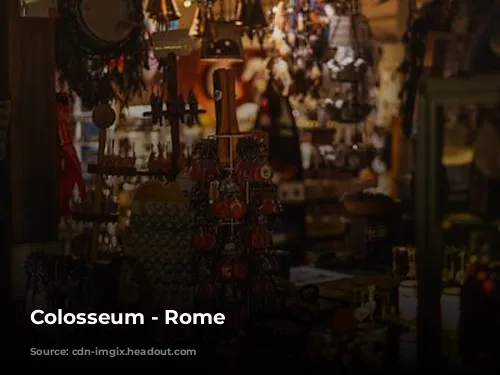
Accessibility and Dress Code for Your Colosseum Visit
Wheelchair accessibility is available at the Colosseum, but the uneven surfaces may not be comfortable for individuals with walking disabilities.
The Colosseum doesn’t have baggage storage, so it’s best to leave large bags and backpacks at your hotel. Medium and small backpacks are permitted.
Comfortable shoes are essential, as the Colosseum is best explored on foot. Break in your new shoes to avoid blisters. Breathable clothing is recommended, especially during the summer months, and be sure to apply sunscreen, wear a hat/cap, and sunglasses.
Audio guides are available in multiple languages, including Italian, English, French, Spanish, and German. You can download the Parco Colosseo app from the Google Play or Apple Play store, but this service is paid.

Enjoy the Colosseum: A Symbol of Ancient Wonder
The Colosseum stands as a powerful reminder of the grandeur and resilience of the Roman Empire. From its imposing structure to its intricate design, the Colosseum offers a captivating journey through time. By understanding its history, architecture, and hidden secrets, visitors can appreciate the enduring legacy of this iconic monument.



